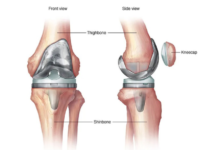NEW DELHI — A new study has found that measuring waist-to-height ratio is a more accurate way to assess the risk of heart disease than relying on body mass index (BMI), long considered the standard indicator of obesity-related health risks.
Published in The Lancet Regional Health – Americas, the study suggests that this simple measurement could help identify cardiovascular risks in people who do not meet the traditional definition of obesity.
Researchers from the University of Pittsburgh analyzed data from 2,721 adults with no prior cardiovascular disease, tracking them over a period of more than five years. “Higher BMI, waist circumference, and waist-to-height ratio at baseline were all associated with higher risk of developing future cardiovascular disease — until we adjusted for other classic risk factors such as age, sex, smoking, exercise, diabetes, hypertension, and cholesterol,” said lead author Thiago Bosco Mendes. “When we did that, only waist-to-height ratio held as a predictor.”
The study found that much of the predictive power came from individuals with a BMI below 30 — those not classified as obese — who may still be at significant risk. Unlike BMI, which does not account for how fat is distributed or distinguish between harmful visceral fat and benign subcutaneous fat, the waist-to-height ratio directly reflects central obesity, the buildup of fat around internal organs that is strongly linked to heart disease.
According to the findings, individuals with a BMI below 30 but a waist-to-height ratio above 0.5 may face a higher likelihood of coronary artery calcification, a key early indicator of cardiovascular disease, even if other health markers such as cholesterol and blood pressure appear normal.
“Using waist-to-height ratio as a cardiovascular screening tool could lead to earlier identification and intervention for at-risk patients who might otherwise be missed,” said senior author Marcio Bittencourt, Associate Professor of Medicine at the University of Pittsburgh. “It’s a simple and powerful way to spot heart disease risk early, even if a patient’s weight, cholesterol, and blood pressure all seem normal.”
The findings underscore the importance of assessing body fat distribution — not just total weight — in evaluating cardiovascular health and preventing future disease. (Source: IANS)













